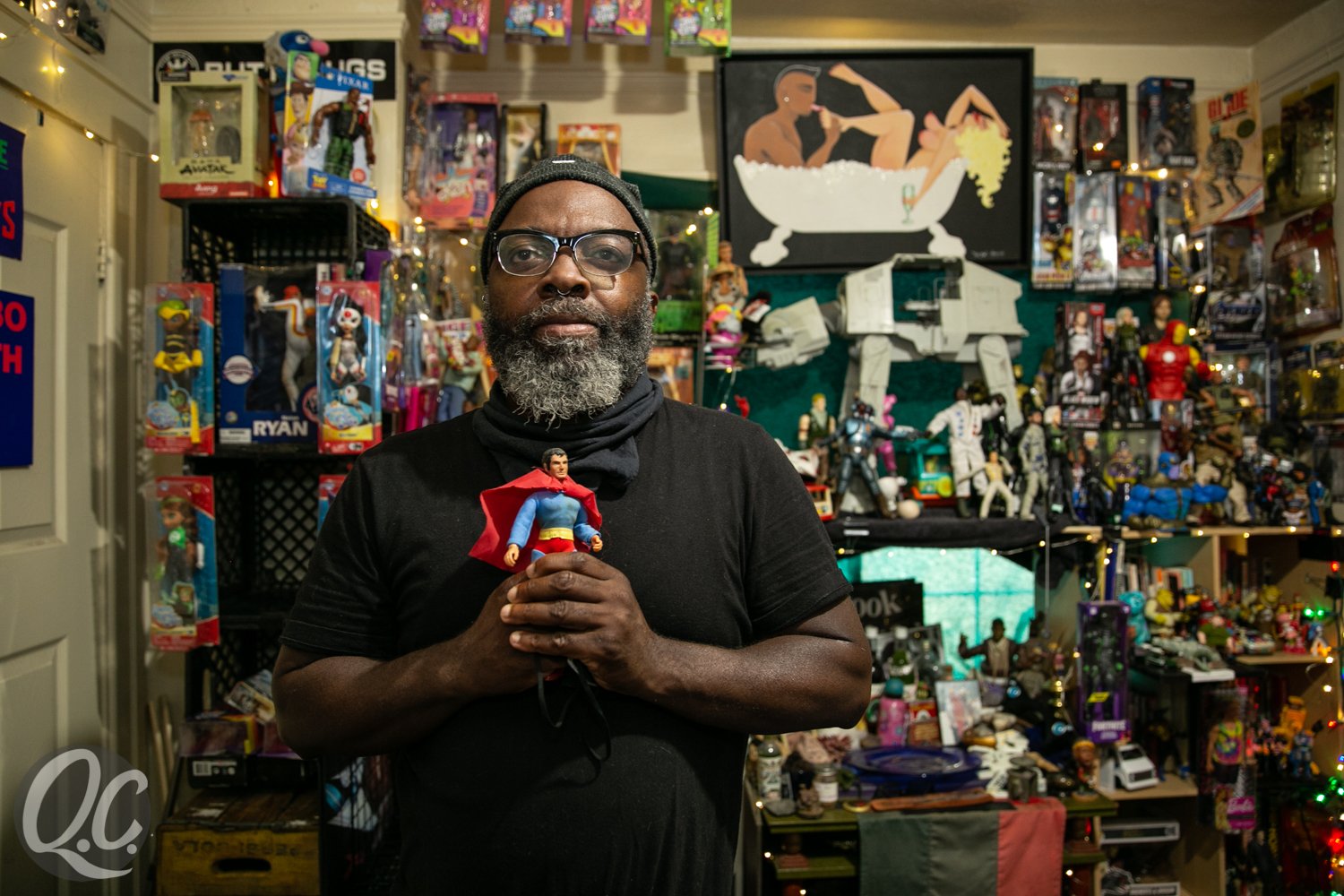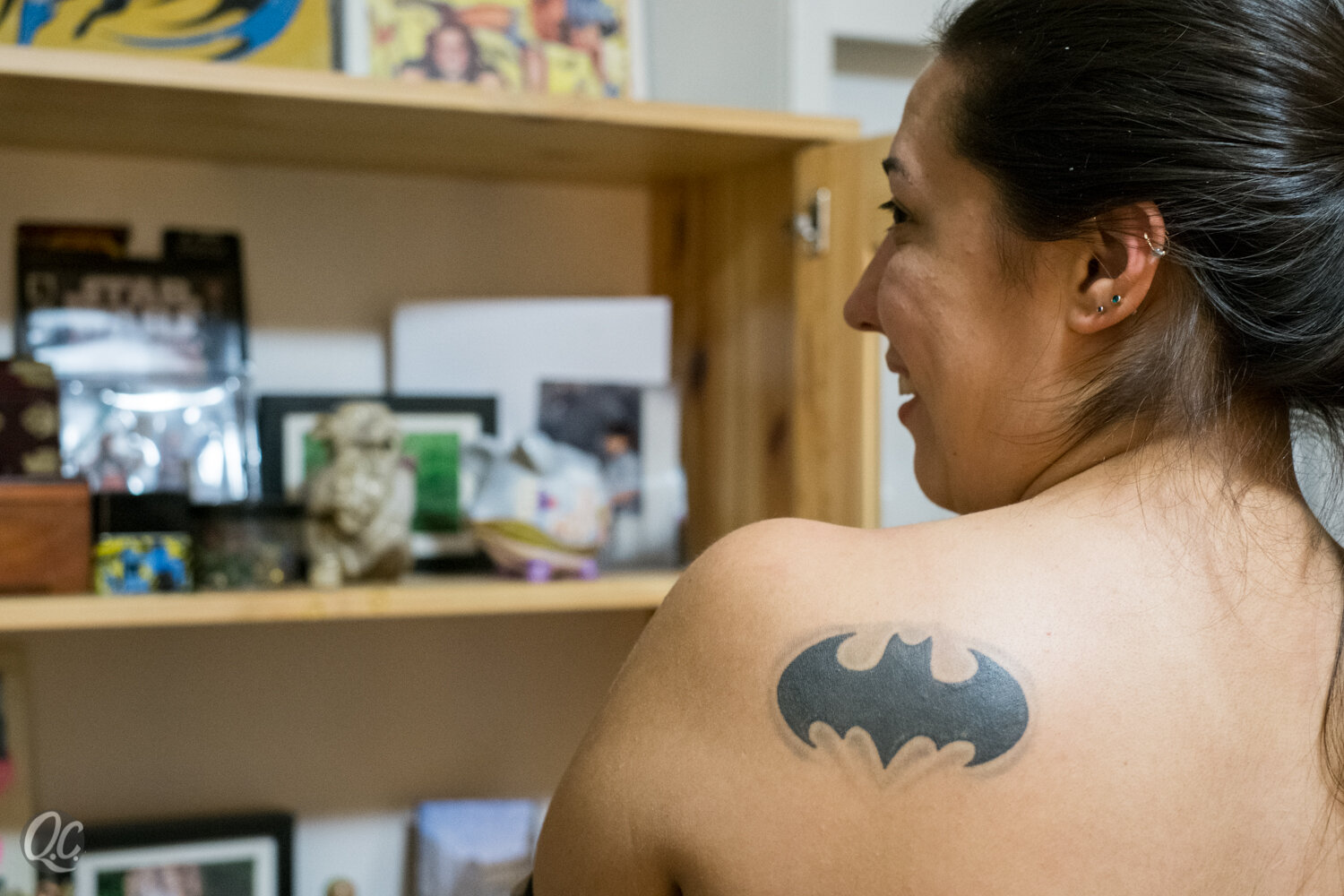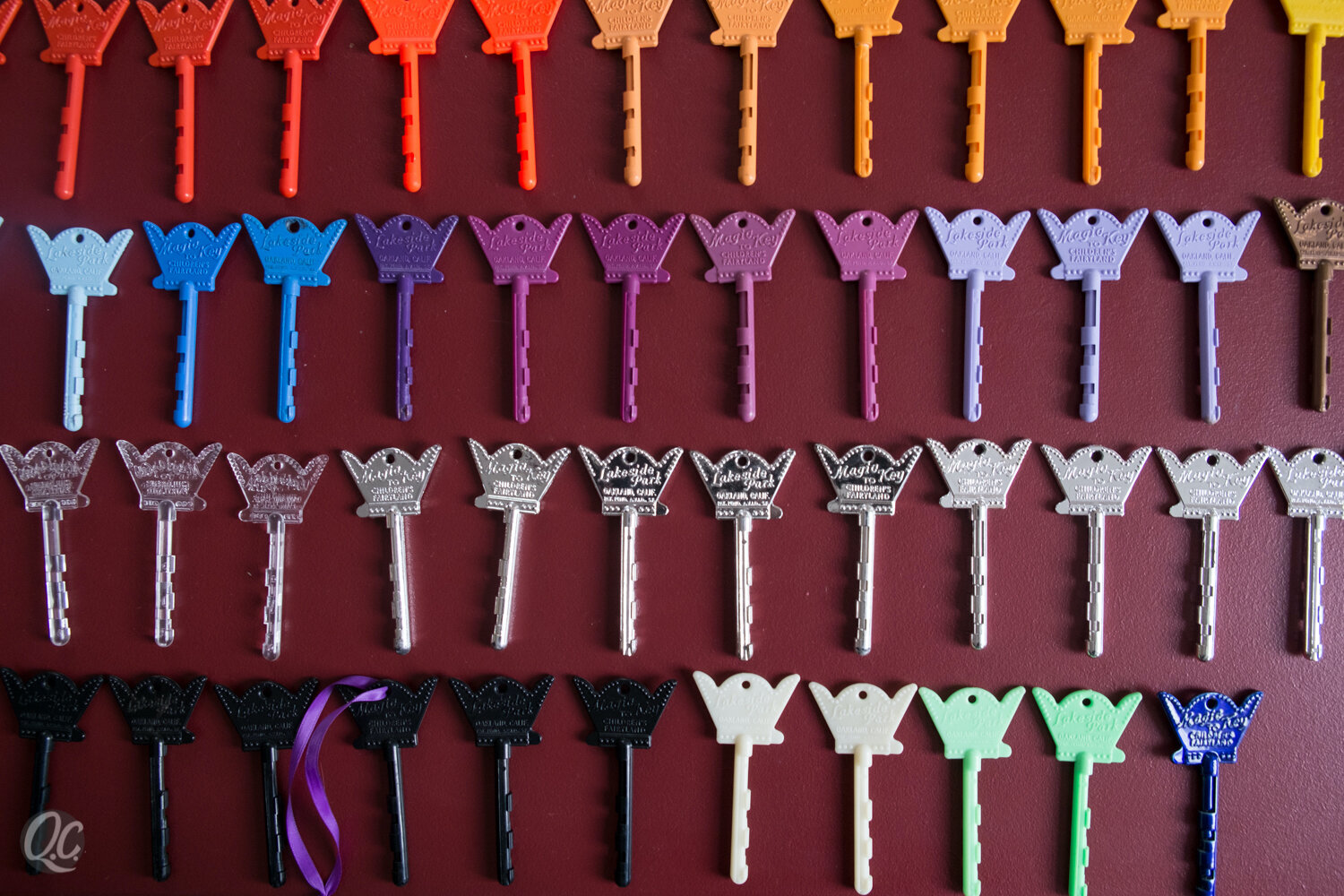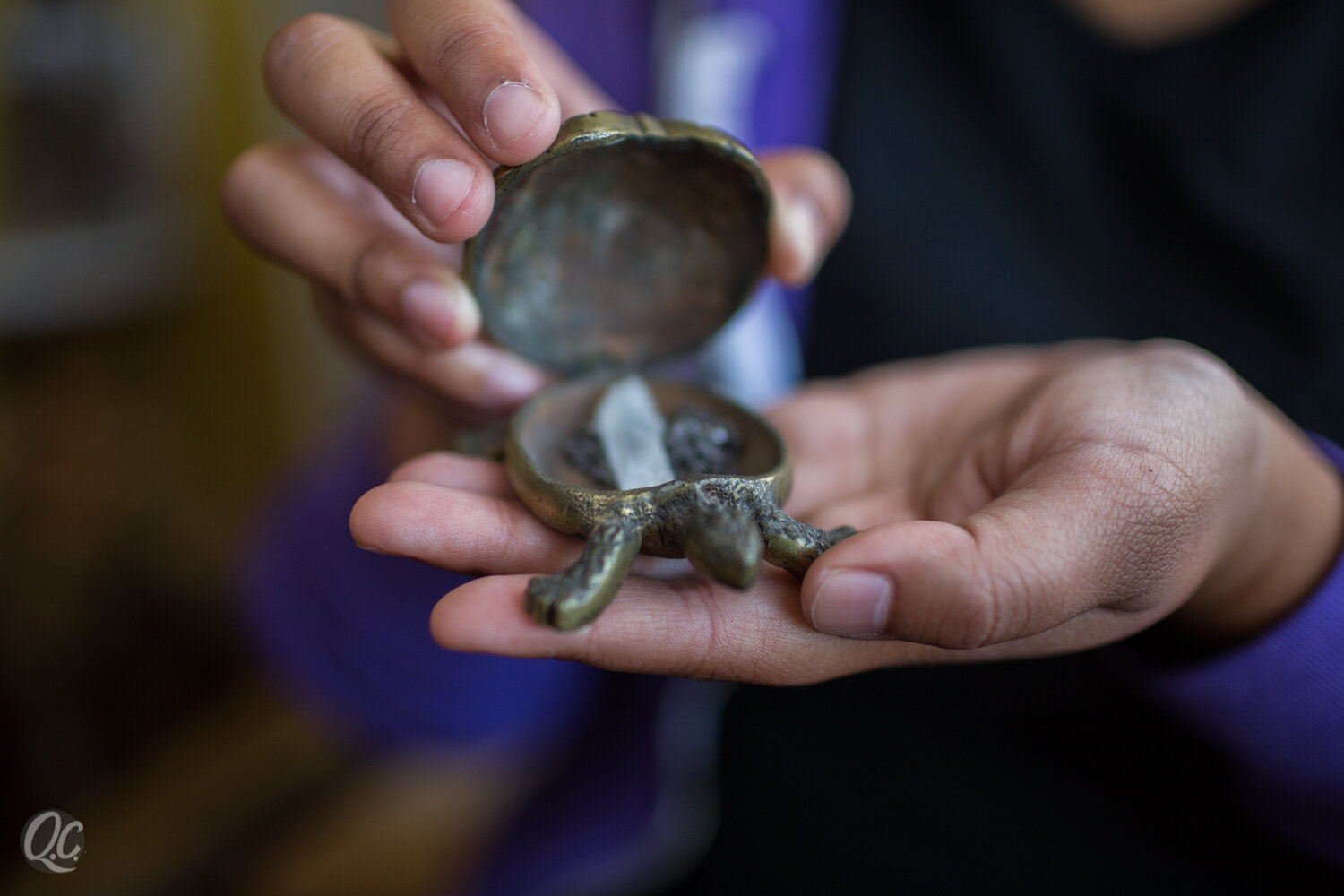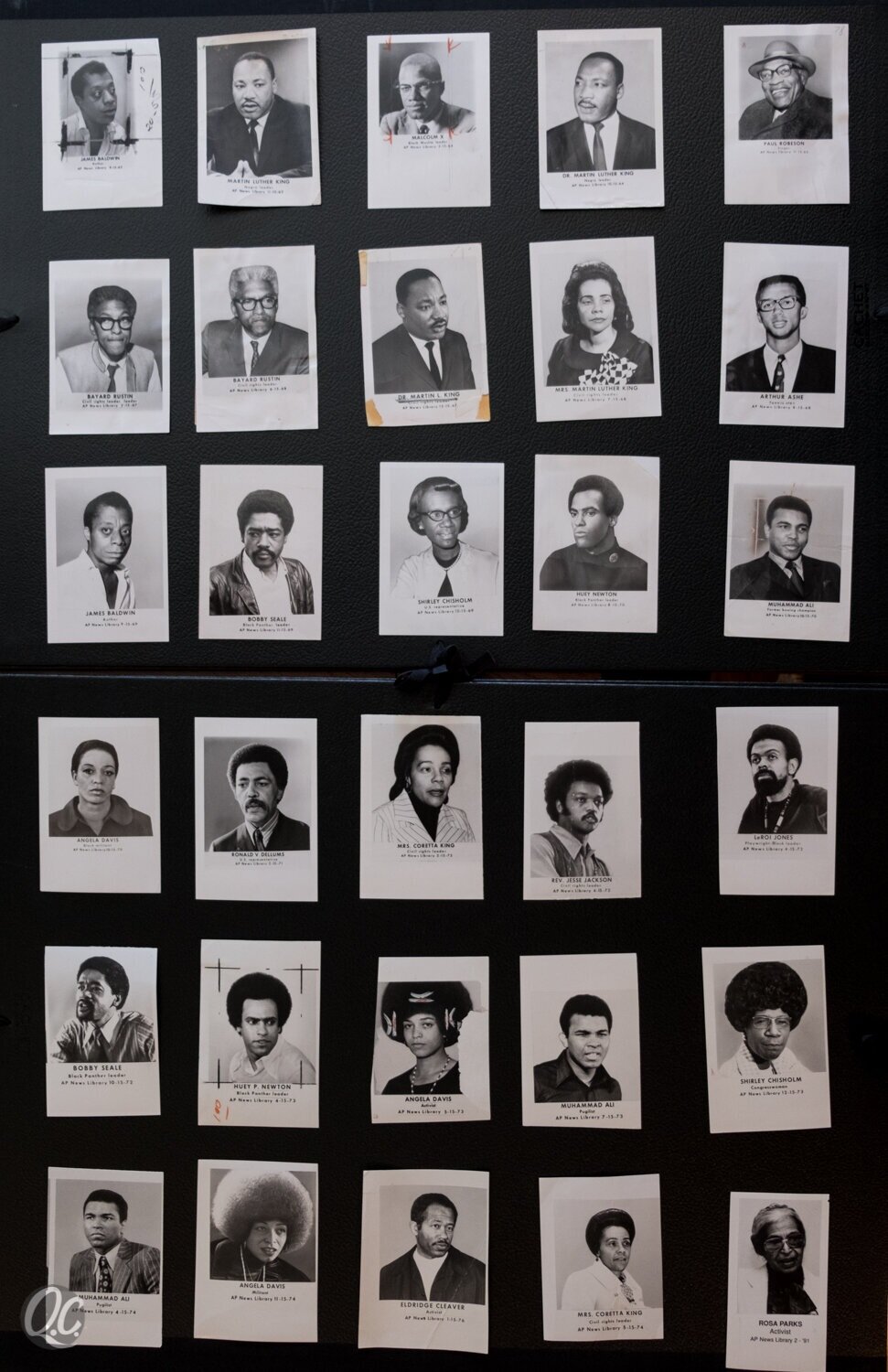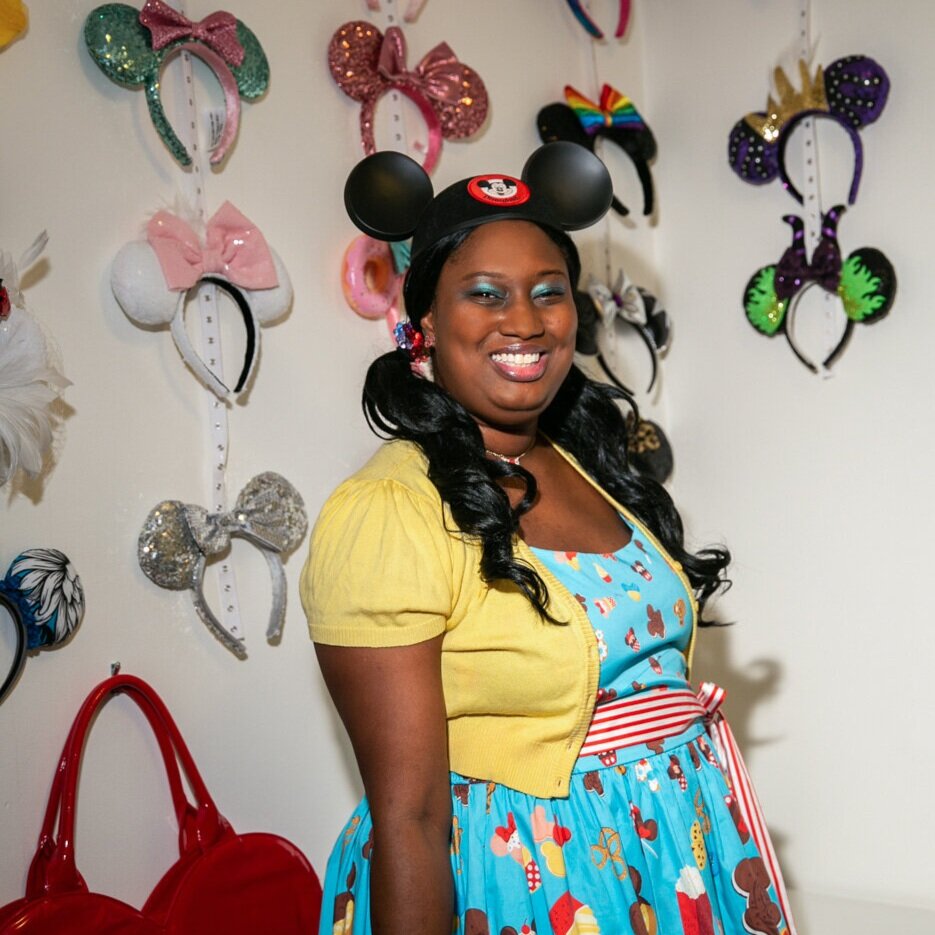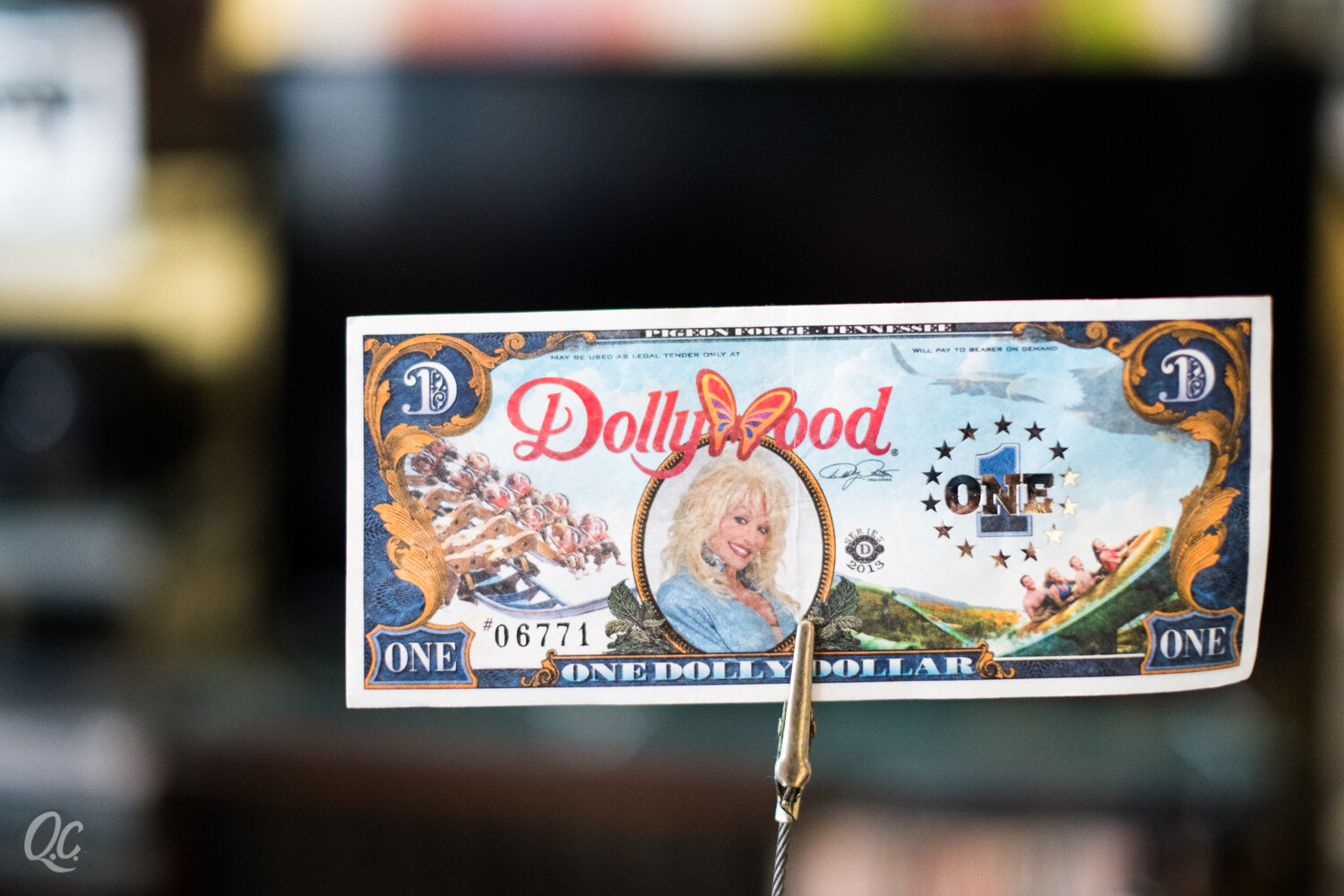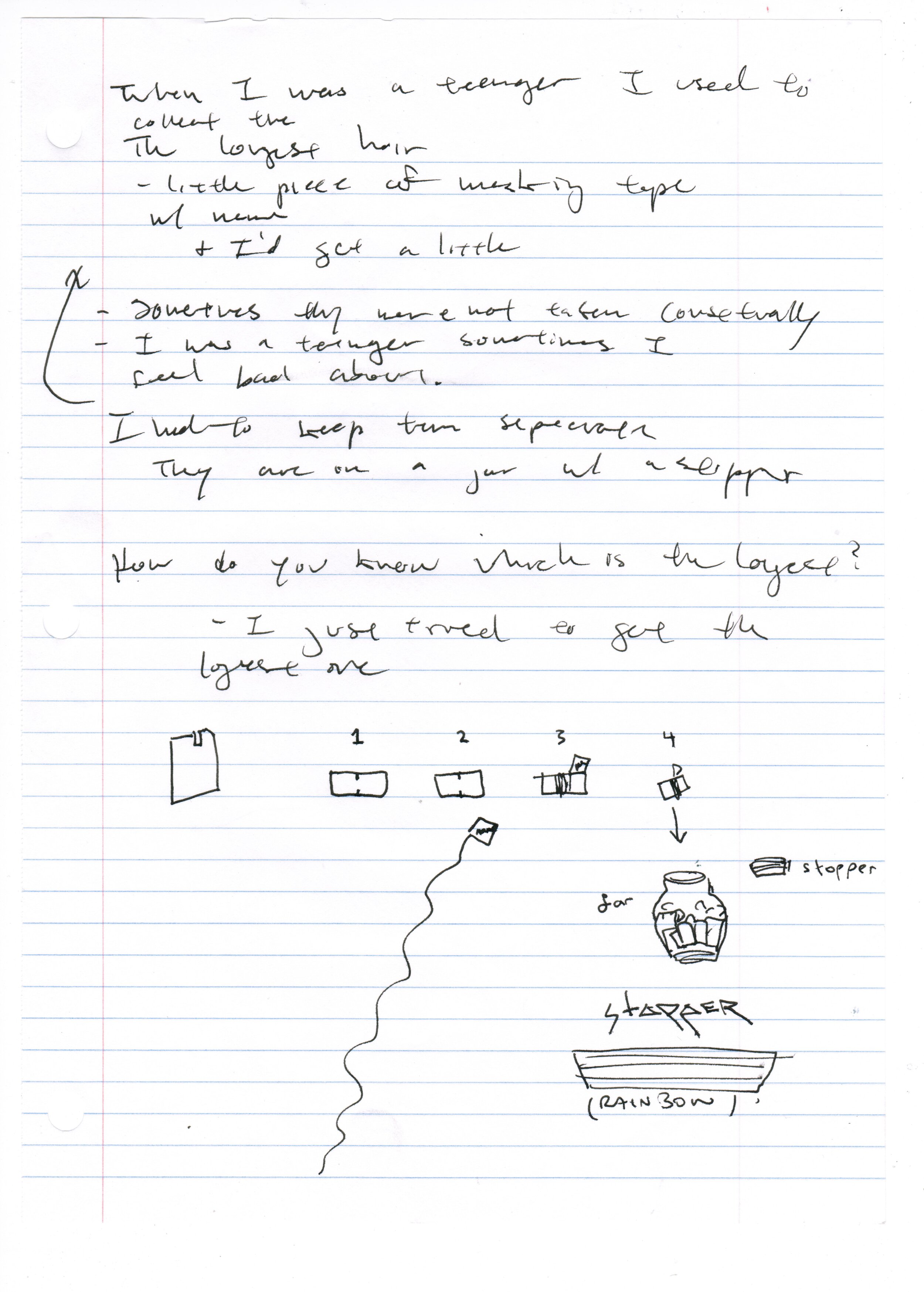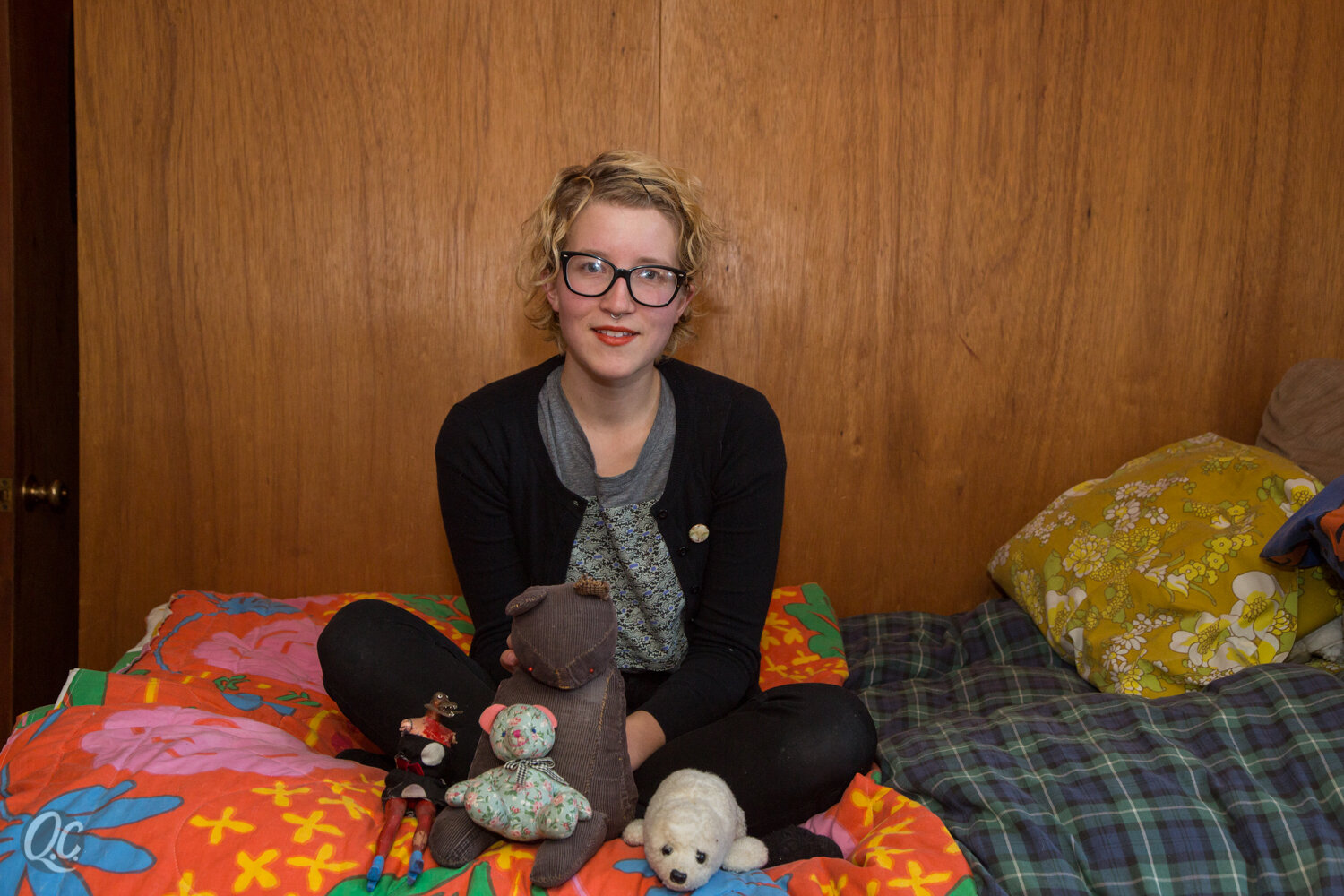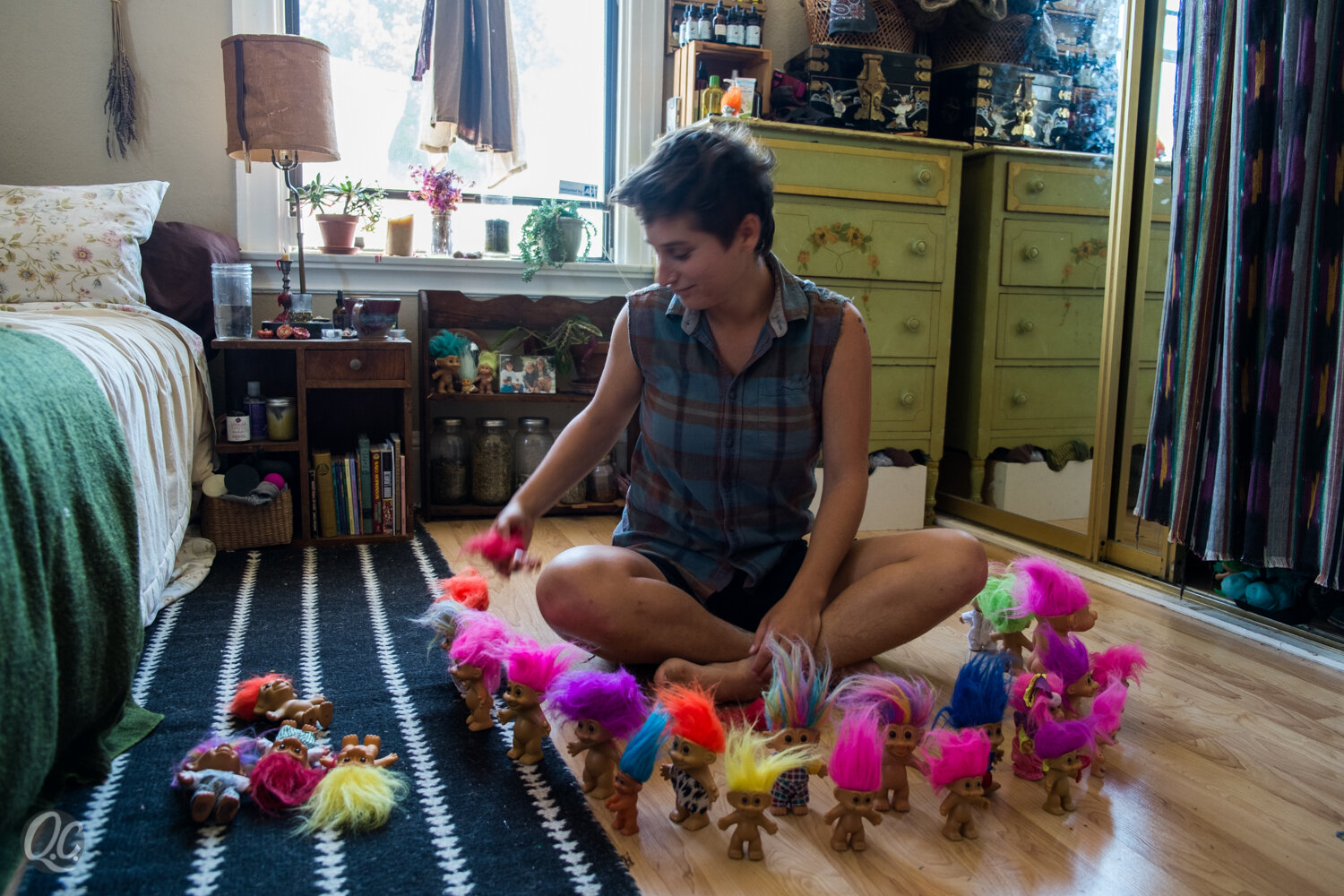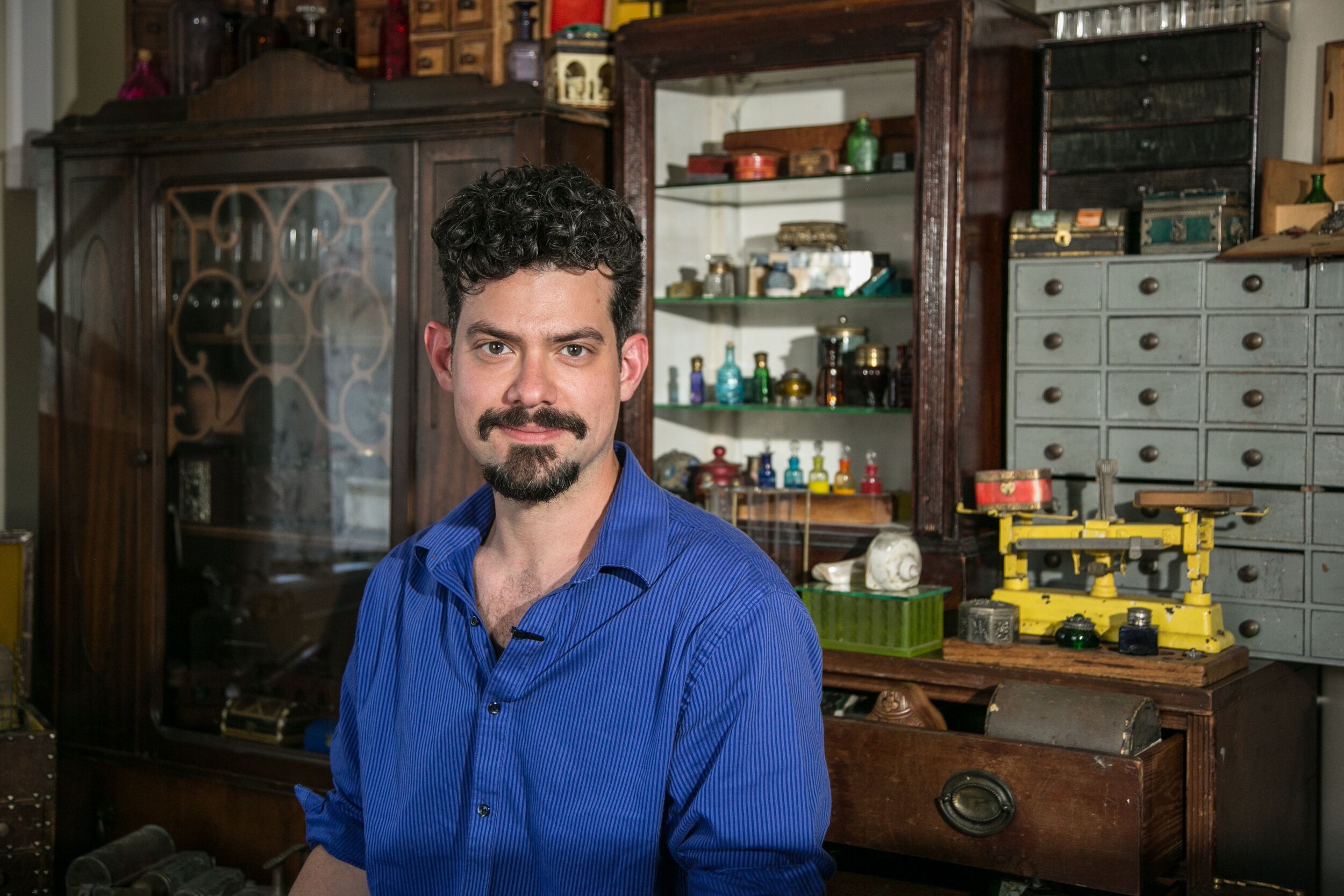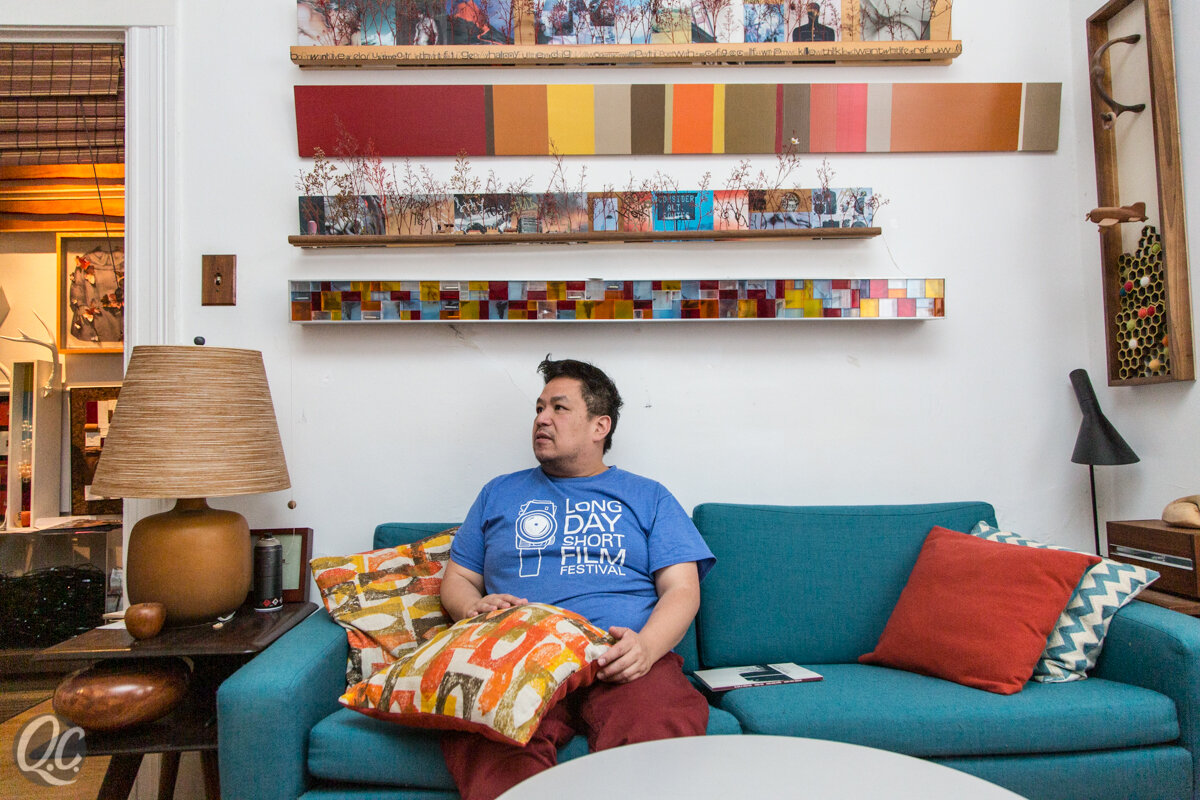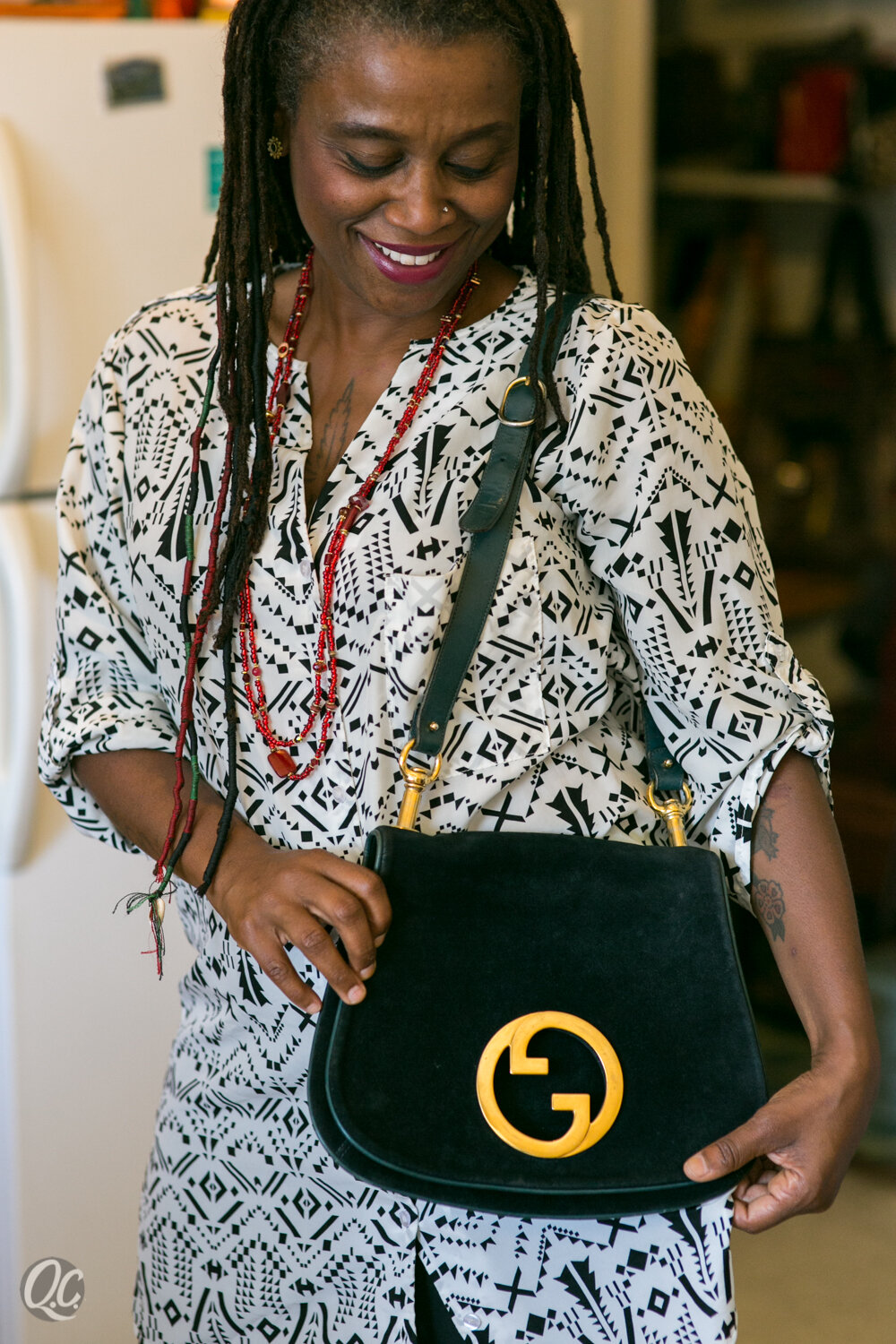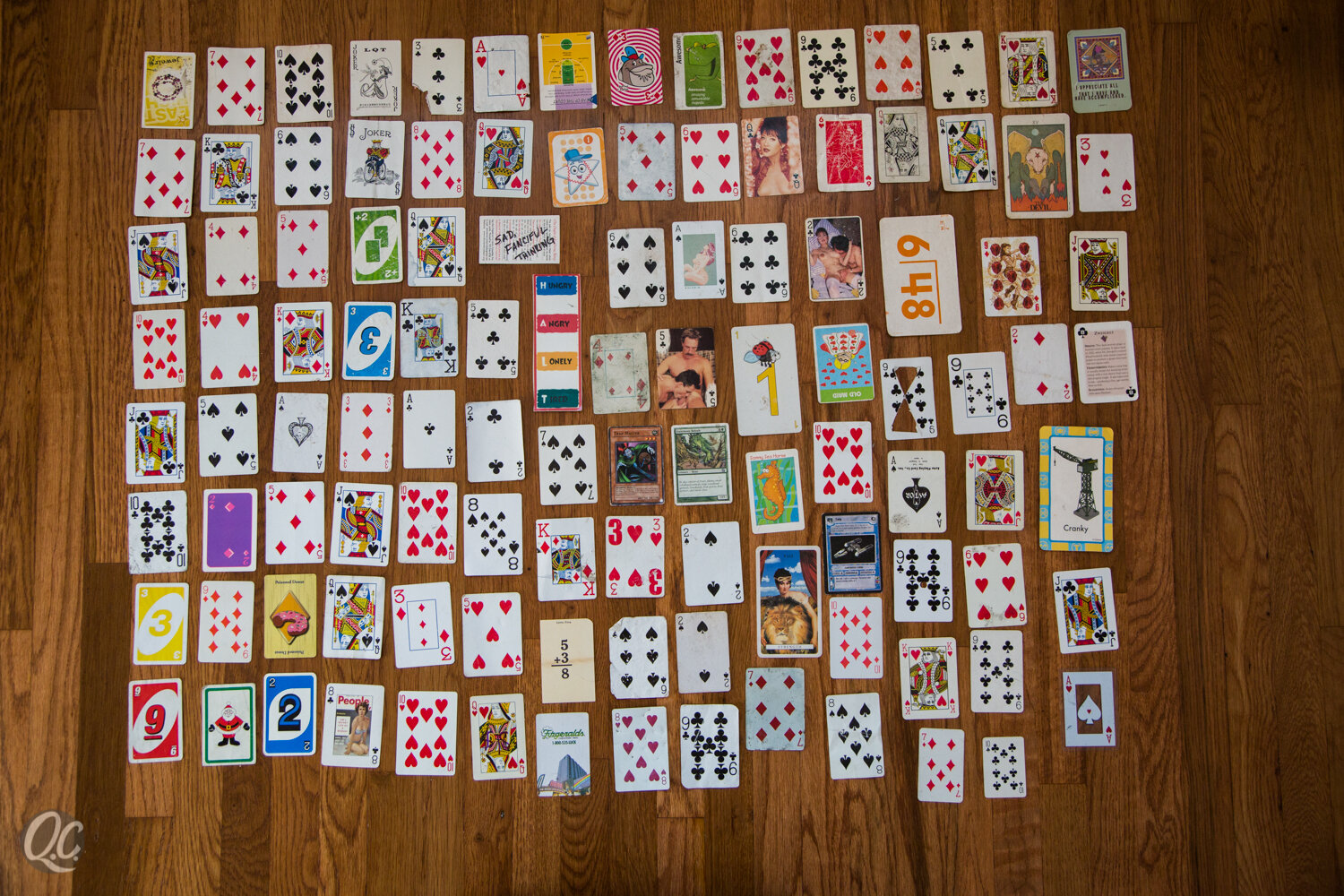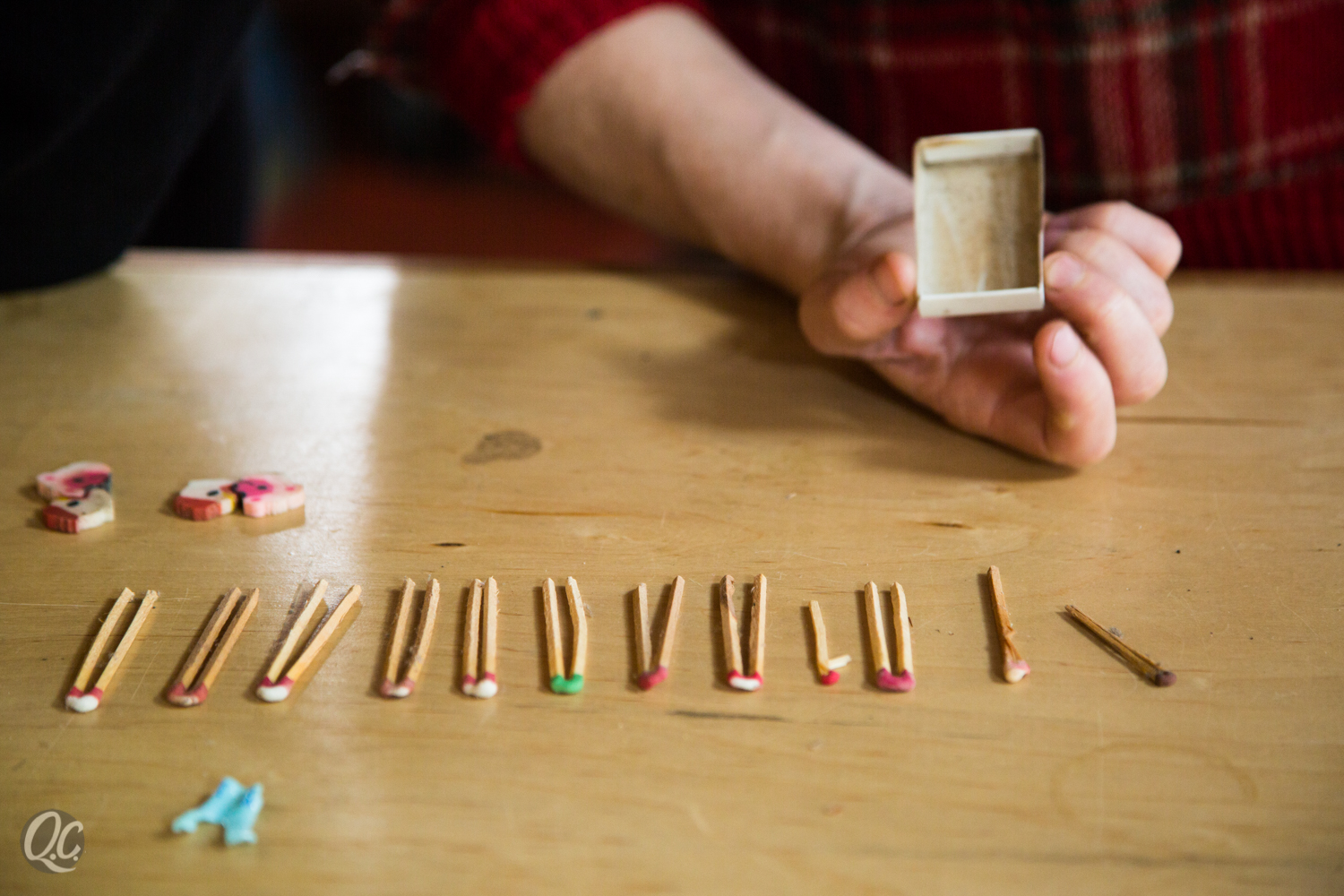Truong: Wooden Objects, Shapes & Clocks
Truong seated on his Hans Wegner couch.
“When we were younger, I really saw the thrifting as part of the immigrant identity. My mother furnished our entire house with things she'd gotten second hand and I was really embarrassed by it growing up.”
ZOE: What does your mom think about your thrifting?
TRUONG: My mom and I thrift for different reasons and my mom doesn’t go to thrift stores. When we were younger, I really saw the thrifting as part of the immigrant identity. My mother furnished our entire house with things she'd gotten second hand and I was really embarrassed by it growing up, I was like, Ohhhh God, could we just live like everybody else? But, as an adult I love it, right. I think it was such an interesting way to be introduced to culture.
Z: And to objects.
T: And to objects. I was introduced to Danish Modernism by my mother because of her thrifting ways and she didn't know—my mother wouldn’t know what Modernism was if it bit her, but she had an eye. She didn’t know the history or the academics of it but she knew what she liked and tended to gravitate towards those things.
Z: Did you go to flea markets with your mom?
T: Oh yeah. All the time. I remember exactly that day when I was with my mom and she found this Stelton tray...which is a Danish serving tray. She bought it for a quarter at a garage sale and seriously 40 years later I'm in a store and I see that tray and I call up my mom and I say, You remember that tray that you bought for 25 cents? I want it. She says, I just threw it out. It’s in the backyard.
Z: How much were they selling it for?
T: $200. You could spend an entire day in my apartment with stories like that. Or this Hanz Wegner couch I got for $20.
Z: This?
T: Yea?
Z: Woah.
T: I know.
Z: Where?
T: Thrift store. I would like to have two things happen by the end of my life: I would like for everything in this house to come from a place like that [Thrift Town] or that I made it myself.
Z: How close are you to that?
T: 90%.
“I have a clock collection. Every time I quit a job I stop a clock. All the clocks in the kitchen represent jobs I've quit. At this point I probably have more clocks than jobs I'll have.”
Z: Is collection in the blood stream?
T: Could be, yeah.
T: My neighbor, Steve lived across the street and he was an amazing collector. Steve had been moved into assisted living and his cousin from Ohio came and she was selling his collections for like a $1 and I went over there and I bought all his belt buckles and all of his books. He was an older queer man and at some point as I was buying all this stuff and I was carrying it from his house, I looked out the window at my front door and I just had a vision of myself.
Reunited ergonomic salad scoops turned into sculpture.
Z: It seems like you also have a collection of cutting boards and pepper grinders.
{Truong inserts an eco-friendly coffee pod into his coffee machine}
T: I love wood. I buy these with the intention of chopping them up. But, then they find their way in. I'm not ready to cut these up yet...
Z: But you will?
T: I don’t know. Right now I'm not doing any wood work because I have moved to acrylics but, you know, I think I collect the history of things more than I collect actual objects.
I will show you a piece—oh, I don’t have any sugar—oh I have sugar but I don’t have cream. Would you like sugar?
So I have a sculpture in the living room that I bought one object for fifteen years ago in a Goodwill. Fifteen years later in the same Goodwill, I found the matching piece...that allowed me to make the sculpture. It’s a very minimalist sculpture.
Z: What are these?
T: You have three guesses.
Z: Wooden ice cream scoops? Salad scoops?
T: They are ergonomically correct salad scoops. So they tilt in a way that your hand goes like this…I think they are actually ladles.
Z: So you reunited a set?
T: I don’t know if I reunited a set. They found their way together.
Z: Have you had other instances like that?
Sculpture using the found image of a young woman’s grandfather.
T: All the time. I have this great story: I did an art piece using some vintage gay images and loved it, it’s one of the pieces I really appreciate. Years later, I had an open studio and a young woman came by and she was stunned and she says, That's my grandfather. I swear that’s my grandfather.
Z: What was the piece?
T: It was a nude image of him in a 1960s magazine. I don’t know who he is. I just thought this was a cool image and I wanted to use it. But that someone looked at it and said, that's my grandfather…
Z: So that brings new meaning to "collecting history."
T: I have some ceramic ones but for the most part I like wood. I'm really into the shapes of things. I also collect shapes. I like the language of shapes.
A collection of wooden shapes and stopped clocks.
Truong’s Stopped Clocks.
I have a clock collection. Every time I quit a job I stop a clock. All the clocks in the kitchen represent jobs I've quit. At this point I probably have more clocks than jobs I'll have.
Z: This is not related to collecting at all, but it’s on my mind, I've been noticing in the news, people will compare different experiences like Gender related experiences to Racial experiences which I find extremely problematic...
T: People think that somehow just because you are queer you get a pass when it comes to the subjectivity of race. It’s not true. I experience a lot of racial bigotry within the queer communities.
If you go on spaces like dating sites, they're really overt about it, statements like, No Asian Gold diggers please. All over. And no one stops to say, Hey, that's not acceptable. It’s very strange.
Z: It seems like per-community, sometimes there is one big topic that gets a lot of attention than others-
“I was going on one of my early morning walks and my neighbor was unloading a giant box of gay porn, all paper print porn and he was about to put into the recycling and I said, What are you doing? and he said, I'm cleaning out my life.”
T: There's a notion of stacking. Case and point, I did a show with a queer Caucasian artist, and I love him dearly, we did the show together. It was a two-person show and the PR person for the non-profit space insisted that I talk about the Asian-ness of my work again and again and again. The PR person was just always steering me towards that, and I was like this has nothing to do with that. It was piece relating to these cranes. I have a student who folds cranes, obsessively. She went through a program at State and for the duration of that graduate program, the only way she could stay actively involved and contribute to the conversation in class was to fold these cranes as she was sitting there talking. She was always folding them and one day she came up to me and she said, I have 20,000 cranes. Would you like to have them? and I said, Of course. I just liked the idea that she made 20,000 cranes obsessively to somehow contain whatever anxiety she had to, so that she could do this work.
Bags of Cranes to be turned into installations.
A collection of cranes folded by one of Truong Tran’s students.
So I made a piece of art to honor that. It was a giant mound of cranes on the floor and the PR person at the place kept saying, Talk to us about the cranes and the Japanese history of the cranes and I said, That's Japanese. I'm Vietnamese. My student is Vietnamese. This is about her obsession. This is not about the Japanese-ness of the cranes.
We exist in a world where everyone’s trying to figure out what container best fits us, or can contain the majority of our being. As an artist I'm trying vey hard to push against that, but, yeah, it’s not something I can avoid.
T: I find that my most abstract works tend to address the most concrete considerations in my life, like race. There's nothing abstract for me about race. It’s a very real thing that I live with. That consciousness is pervasive in my making. Like this piece [color swatches spiraled into a rectangle] is all about race.
“Framed Within a Context of White” —created from a collection of paint chips.
Z: What's this piece called?
T: This is a piece that was born from the reality of being misplaced from my studio. I didn’t have materials. I didn’t have a workshop. All I had for the 4 months of summer was my walks and my neighborhood. So I start walking to all the hardware stores and they're friends of mine and they said, Why don’t you take some color swatches? I kept collecting color swatches from all the hardware stores and I created this movement of color. The hole in the middle that I still have to cut out and frame in a video pod, is going to be a moving image of all, or as many of the lives that I can collect images of, that have been effected by the violence of our society. The piece itself is going to be called, Framed Within the Context of White cause there is this really startling white frame that I'm working with.
Z: So when you go to thrift stores, does everybody know you?
T: Everybody knows me, yeah.
{Grins from ear to ear.}
Targets from Tran’s Framed Target series created from his collection of thrifted bowls.
Truong in his basement full of collected materials.
It’s almost embarrassing. You are like Norm at the bar. Also because there was a video made about my bullseyes that kind of went viral so everybody in the community started recognizing me as the guy who got displaced, so everybody started talking to me about that.
Z: When you were collecting the bowls, was it just any bowl? Any wooden bowl? Were there things you were looking for specifically?
T: Shapes. Accessibilities. I don’t just buy the bowls; I have to chop them up.
Z: And the queer porn? Where do you find the porn?
T: I was going on one of my early morning walks and my neighbor was unloading a giant box of gay porn, all paper print porn and he was about to put into the recycling and I said, What are you doing? and he said, I'm cleaning out my life. I saw all that material...I'm not going to turn that away. So, I said, Let me have it, I’ll figure out what to do with it and I took it and I kept it in my basement and I have this huge supply of vintage gay porn, not all of them are even gay. There are a lot of Playgirls, but then again the majority of people who bought Playgirls were gay men.
Visual artwork created from found porn.
Butterflies cut from old porn magazines.
Quilt woven from porn and calendars for Truong’s neighbor, Joe.
And then about six months to a year later I received word from another neighbor that my friend had passed away. I was sitting with all this material and I had no idea what I was going to do with it, but the minute that I heard of his passing, something clicked and I realized I'm going to make him a blanket to send him off into his afterlife, so it was a gestural thing and I started weaving the porn with old nature calendars to represent the passing of time.
“I have dear friends who think, He collects salt and pepper shakers and they start coming at me with salt and pepper shakers and it is not what I'm looking for. That's the thing, when you collect, the object speaks to you and it reveals its history to you.”
I made little pieces that I sewed them together into a large quilt. I didn’t have much thought about what that material incited. I just did it. Then when I did it and it was shown, I had the realization that everyone brings so much interpretation and consideration to that material. A lot of people were asking why I didn’t use more images of men of color in the work as though somehow seeing the image of a man of color in the art connected it with my own identity. That's what they wanted. Right? That was never the intention for me. And then I actually felt so pressured by the community asking me these questions again and again that I started doing research on how to use more images of people of color. One thing that I discovered that I was really uncomfortable with and pushed me away from that practice was I would have to go to the sections in magazine stores that were pretty much categorized as fetish. You want to go to the Black Men's section, or the Asian Boy Toys. It’s always categorized in that way and I didn’t want to do that. And then I had to remind myself that this was found material.
Z: Did you feel a little like, How dare you? It’s just, having talked to you and knowing that you are working with found materials...
T: Yeah, but at the same time...usually that kind of criticism comes from your own community.
Z: Do you think it’s a thing where people are uncomfortable, so they find a thing they can latch on to?
T: It’s their own discomfort. Most of the time when I’m being questioned about anything, it’s about the other person's discomfort.
Z: I’ve noticed that too, with the pronouns… I think people get uncomfortable partly because they feel like they wont be able to get the pronouns right, so they are like but the language and the grammar, etc...
T: And I do that myself and that has everything to do with my discomfort being an immigrant English Teacher and you know that's not my first language and I'm protecting myself or this notion of my own identity as well as anyone else’s in that moment. It’s just a strange moment in time where we are dealing with this.
Z: Have you found that within the gay community that there is a tendency towards collecting?
T: I think sometimes, collecting comes with eccentricity and I don’t have a theoretical definition. I don’t have any real theories about this, but a lot of my queer friends tend to be a little more eccentric. I think the act of coming out, especially for someone of my generation, took a lot of mustering up chutzpah, so when you get there, once you’re there...This interview is going to be totally incoherent.
Z: That's fine.
{Mail bursts through the front door and clanks to the ground.}
Z: It is interesting how much visual artists seem to be collectors. A lot of the people I’ve been interviewing also are visual artists.
T: I feel like collecting becomes an art in itself.
Z: Did you always know you were going to, though?
T: No. No because I had a very practical seed in my head and part of that was to find a way to support myself and find a living and art was just not going to be likely, you know?
Z: I've also found a lot of people with their collections have rules to follow.
T: Systems. I have dear friends who think, He collects salt and pepper shakers and they start coming at me with salt and pepper shakers and it is not what I'm looking for. That's the thing, when you collect, the object speaks to you and it reveals its history to you.
From his collections of wooden shapes, Truong Tran’s collection of Kokeshi dolls.
Z: Are there any other collections you have that you don't use in your work? Or can anything go into it?
T: I like to think that almost anything will find its way into the work.
Z: That's what makes me think you are not a hoarder. What are those?
T: Kokeshi dolls. They are Japanese toys from the 1950s.
Z: Is that a collection you got all at once?
T: Yeah. I found it at the flea market and I was like I can’t separate these. I can’t let anyone else separate them. That's the other part of collecting, you see something and your compulsion, it wasn’t so much that I had a desire for Kockeshi dolls. I couldn't let it...
Z: Be dispersed?
T: It’s like I saw a family and I couldn’t see the family being broken apart so I bought it all and I'm going to make it an installation.
Z: Would you cut them up?
T: No, no absolutely not.


















Truong Tran is a poet and visual artist. Hi publications include, The Book of Perceptions, Placing The Accents, dust and conscience, within the margin, and Four Letter Words. He is the recipient of four Arts Commission’s Individual Artist Grants, An Arts Council of Silicon Valley Grant, a California Arts Council Grant, a Creative Work Fund Grant and a Fund For Poetry Grant. Truong lives and works in San Francisco and is currently the Visiting Assistant Professor of Poetry at Mills College. His poetry has been translated into Spanish, French and Dutch. His visual work can be viewed at www.gnourtnart.com.
















